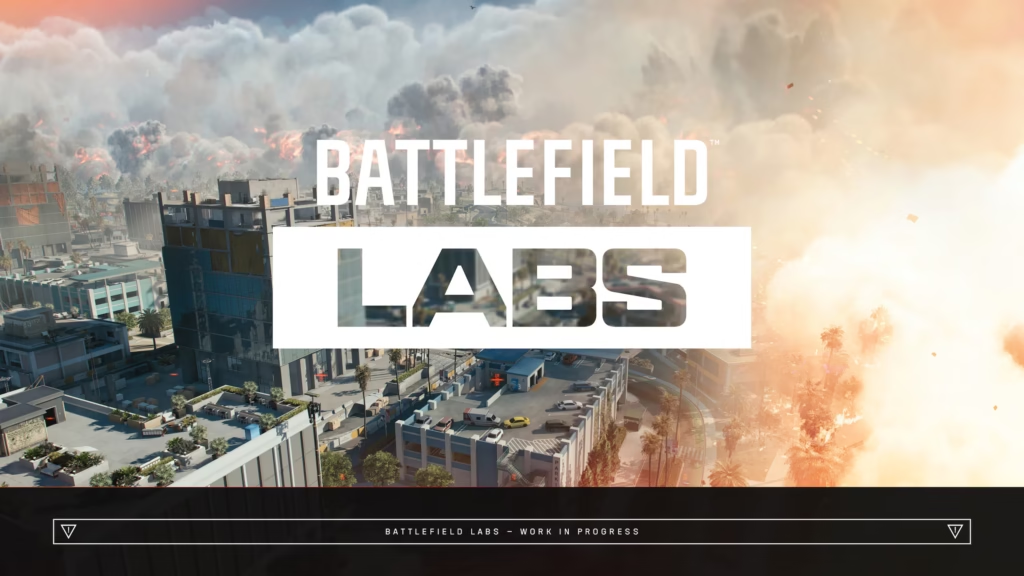🕹️ Gaming Myths Busted (Lag, FPS, Ping Explained): Intro
Every gamer has either made or heard the classic excuses:
“Bro, lag ho gaya.”
“Ping high tha.”
“FPS drop ne aim bigaad diya.”
It’s practically part of gaming culture. But here’s the thing — a lot of what we call “lag” or “ping issues” is either misunderstood or completely wrong. Most players don’t really know the difference between lag, ping, and FPS, so they blame the wrong thing and never fix the real issue.
In this ultimate guide, we’re going to bust the most common myths around lag, ping, and FPS. By the end, you’ll not only understand the difference clearly, but you’ll also know how to fix most problems like a pro.
This isn’t just theory — this is practical stuff used by competitive gamers, streamers, and tech experts every single day. ⚡
Quick Link

🧠 1. Lag vs FPS vs Ping — What’s the Real Difference?
Most gamers use the three terms — lag, ping, and FPS — like they mean the same thing. But they’re actually completely different and affect gameplay in different ways.
- Lag: A general term for delays between your input and the game’s response. It can be caused by slow internet, server issues, or weak hardware.
- Ping: A measurement of how fast data travels between your device and the game server, in milliseconds (ms). Lower ping = faster response.
- FPS (Frames Per Second): How many frames your system renders every second. Higher FPS = smoother graphics and lower input delay.
👉 Myth: “High FPS means no lag.”
🚫 Busted: You can have 300 FPS but still lag if your ping is bad. Similarly, great ping won’t help if your FPS is too low to process frames smoothly.
Understanding this basic difference is the first step. If your shots are delayed, check ping. If your aim feels choppy, check FPS. If everything is delayed randomly, check both and the server.

🌐 2. Myth: High Ping = Bad PC
A common myth among casual gamers is: “My ping is high because my PC is weak.”
Wrong. Ping has nothing to do with your PC hardware. It’s completely a network issue.
Here’s what usually affects ping:
- Distance from the server: The farther you are from the game server, the higher your ping.
- Network route: Sometimes your ISP routes your connection inefficiently.
- Wi-Fi vs Ethernet: Wi-Fi can cause unstable ping; Ethernet is much more stable.
- Network congestion: If multiple people are using the same internet, your ping spikes.
✅ Quick Fix Tips:
- Use a wired Ethernet cable.
- Select the closest game server to your location.
- Stop background downloads or streaming.
- If your ISP’s routing is poor, try using a good gaming VPN to find a better route.
So no, upgrading your graphics card won’t lower your ping. But switching to a better network setup might.
💻 3. Myth: FPS Drops Are Caused by the Internet
This is another classic misconception. Many gamers think:
“My FPS dropped because my internet was lagging.”
Nope. FPS has nothing to do with your internet connection.
FPS depends on your hardware and game settings, not your Wi-Fi. Your graphics card (GPU), CPU, and RAM are responsible for rendering frames.
Common reasons for low FPS:
- Weak or outdated GPU
- Too many background apps are consuming RAM/CPU
- High graphics settings that your system can’t handle
- Overheating hardware is causing thermal throttling
- Old or corrupted graphics drivers
🛠️ How to Fix FPS Drops:
- Lower graphics settings (textures, shadows, post-processing).
- Update GPU drivers regularly.
- Clean your PC and improve cooling to prevent overheating.
- Close unnecessary apps (especially browsers and screen recorders).
- Use in-game FPS caps to avoid sudden fluctuations.
Internet doesn’t affect FPS, but low FPS can feel like lag because your screen updates slowly — making aiming and movement sluggish.

📡 4. Myth: Lag Always Comes from Your Side
Not every lag spike is your fault. Sometimes the server itself is the problem.
For example:
- If everyone in the lobby starts lagging at the same time, it’s usually a server-side issue.
- During game updates or special events, servers often get overloaded.
- Poor server infrastructure in some regions can cause unpredictable spikes.
How to confirm it’s not your fault:
- Check the game’s official server status page.
- Look at online forums or Twitter — if many players are reporting the same issue, it’s server-side.
- Use ping tools to test multiple servers; if only one region is spiking, that’s the culprit.
Sometimes, no amount of tweaking on your end can fix server lag. You just have to wait it out or switch servers.
🌍 5. Myth: More Internet Speed = Better Gaming
Many ISPs advertise 200 Mbps, 500 Mbps, even 1 Gbps plans and say it’s “perfect for gaming.” But gaming doesn’t actually need that much speed.
Online games send very small packets — usually less than 1 Mbps. What matters more is latency (ping) and connection stability, not raw speed.
- Even 10–25 Mbps is enough for smooth gaming.
- A stable 30 ms ping is far better than 100 Mbps with unstable latency.
- Packet loss (when data doesn’t reach the server) is often a bigger issue than speed.
📌 Pro Tip: Choose an ISP that offers low latency, stable routing, and good peering with major game servers. Don’t get fooled by just the speed numbers.
⚡ 6. Myth: FPS Above 60 Doesn’t Matter
For casual gaming, 60 FPS is decent. But if you play competitive shooters like Valorant, CS2, or Apex Legends, higher FPS absolutely matters.
Why? Because higher FPS = lower input delay.
Every extra frame gives you a more accurate, real-time picture of what’s happening.
- At 144+ FPS, movements feel sharper.
- Aiming becomes smoother and more responsive.
- You can track enemies more precisely.
However, your monitor’s refresh rate must match. A 60 Hz monitor won’t fully show 144 FPS benefits. For best results, pair high FPS with a high refresh rate monitor (144 Hz or above).
🧊 7. Myth: V-Sync Fixes Lag
V-Sync (Vertical Sync) matches your GPU output to your monitor’s refresh rate to prevent screen tearing. While it makes visuals look cleaner, it can add input delay.
- If your FPS dips below your monitor’s refresh rate, V-Sync can actually make things stutter more.
- In fast-paced games, the added input delay can mess up your reaction time.
Better alternatives:
- G-Sync (NVIDIA) and FreeSync (AMD) adaptively match FPS to monitor refresh rate without input lag.
- Or use in-game FPS caps close to your refresh rate for smoother performance.
🌐 8. Myth: All Servers Are the Same
Server location matters a lot.
If you’re playing from India on a European server, your ping might shoot up to 150–200 ms. That means every shot you fire reaches the server 0.2 seconds late — a lifetime in competitive gaming.
Different regions also have:
- Different server tick rates (how often the server updates)
- Different levels of congestion
- Different routing paths from your ISP
✅ Always choose the server closest to you for the best ping and stable experience.
🧪 9. Myth: Background Apps Don’t Affect Gaming
Many gamers keep YouTube, Discord, Chrome, OBS, or torrents running in the background. “It’s just idle,” they say. But these apps often use CPU, RAM, or bandwidth secretly.
Even 1–2 Mbps upload usage from background apps can spike your ping in online games. Screen recording software can also eat GPU resources, lowering FPS.
🧰 Best Practices:
- Close all unnecessary apps before launching your game.
- Check Task Manager for hidden processes using bandwidth.
- Use Windows Game Mode to prioritize gaming performance.
🧠 10. Myth: Lag Switches or VPN Tricks Give You an Edge
Some players try to intentionally lag to confuse opponents — using lag switches or weird VPN routes.
This might have worked 10 years ago, but modern games and anti-cheat systems detect such behavior easily.
- Unstable ping often hurts you more than your opponent.
- Lag switchers can get banned.
- VPNs usually increase ping unless they’re premium low-latency gaming VPNs.
The real edge comes from stable ping + high FPS + good aim, not tricks.
🧰 Bonus Section: Pro Gamer Lag & FPS Checklist
Before you blame the game, run this checklist 👇
✅ Network
- Using a wired Ethernet connection
- Connected to the nearest server region
- Stable ping (below 50 ms ideally)
- No background downloads or streams
💻 Hardware
- GPU drivers up to date
- Temps normal, no overheating
- FPS matches game requirements
- Proper monitor refresh rate settings
⚙️ System
- Background apps closed
- Windows/Game Mode on
- No unnecessary overlays or recording apps
- Regular maintenance & cleanup
This simple checklist can fix 90% of common lag/FPS complaints instantly.
🏁 Conclusion
Lag, ping, and FPS are some of the most misunderstood parts of gaming. Most players blame the wrong thing, leading to endless frustration.
- Ping problems are network-related — not your PC.
- FPS issues are hardware-related — not your Wi-Fi.
- Lag can come from multiple places: your system, your connection, or the server itself.
By understanding the differences and busting these myths, you can take full control of your gaming experience.
✅ Switch to wired connections
✅ Optimize your settings
✅ Close background apps
✅ Pick the right servers
And most importantly — stop spreading gaming myths 😎
Next time someone in your squad blames “lag” for every missed shot, send them this guide. Be the myth-buster your lobby needs 🧠🎮🔥
Before making any decision, make sure to do proper research through trusted blogs and YouTube channels. You’ll find many more detailed blogs on Gaming Guide to help you make the right choice.
Discover more from Gaming Guide
Subscribe to get the latest posts sent to your email.






